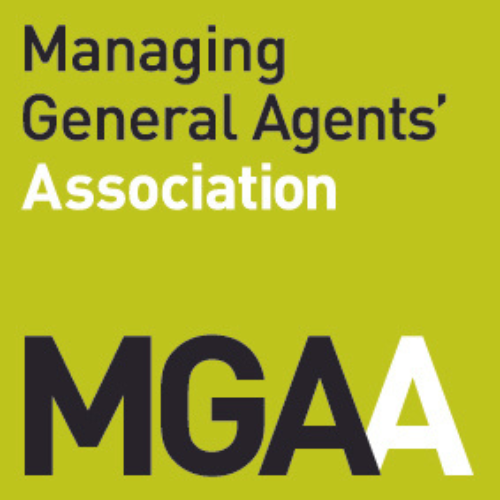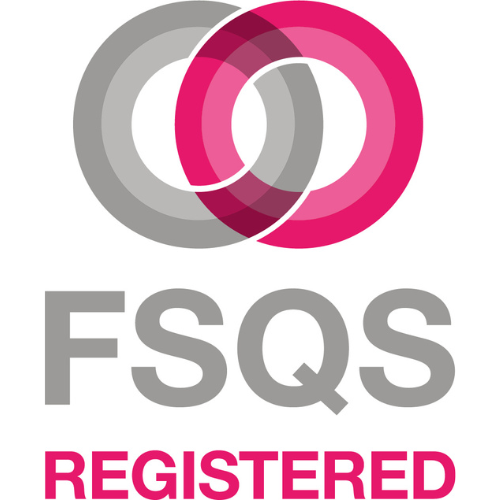The Insurance sector may be forgiven for not considering itself a direct target for individuals or entities looking to evade their tax responsibilities. The rules and requirements have traditionally focused on banking which is understandable when this sector has often been hardest hit by those looking to commit financial crime. As criminals continue to pursue new opportunities, the insurance sector must be aware of its responsibilities to prevent being used as a vehicle to facilitate tax evasion.
We explore the legal and regulatory framework operating in the UK to prevent tax evasion, with a focus on the role of HM Revenue & Custom (HMRC). We also look at what companies operating in the insurance sector should be doing to ensure they comply with the requirements before considering what can happen when the requirements are not adhered to.
A key date in the fight against tax evasion was the introduction of the Criminal Finances Act (the Act) in 2017. The Act targets corruption, money laundering and most importantly for us here, tax evasion. It builds on the Proceeds of Crime Act 2002 and the Bribery Act 2010 and provides further enforcement powers to the UK government. It also includes a provision for ‘Unexplained Wealth Orders’ which allows UK law enforcement to investigate and seize property suspected to represent the proceeds of criminal activity.
One of the key developments of the act is to extend liability for tax evasion from the individual and facilitators to companies and partnerships and to include criminal prosecution and unlimited fines for the latter. Previously if an individual evaded tax and was facilitated by the advice or actions of those in a company, although the individual will have committed a crime and those directly facilitating it could be prosecuted, the company could not be held liable. This is no longer the case.
The criteria for failure to prevent criminal facilitation of tax evasion is as follows:
- There must be criminal tax evasion under either UK law or foreign law (UK person or entity operating overseas);
- It must be enabled by the company’s employee, agent or those performing services for, or on behalf of, the company (‘associated persons’); and
- The company must have failed to prevent that person from enabling the facilitation.
So, what can companies operating in the insurance sector do to protect themselves from being used as a vehicle for criminal tax evasion? The UK regulatory environment dictates Insurers, brokers, and MGAs are required to carry out due diligence or ‘KYC’ on their customers before entering a transaction. The collated information should include the insured (s) name, address, business activity, source of funds and ownership including the ultimate beneficial owner(s) of a company. This is not a new requirement specific to tax evasion. Tax evasion is considered a predicate offence leading to money laundering, which has been under the scope of the Financial Conduct Authority (FCA) for several years and continues to be one of their main areas of focus. It is yet surprising that some of this basic information remains absent in many cases before insurance cover is bound.
KYC goes far beyond onboarding. HMRC and the FCA expect Insurers, Brokers and MGAs to adopt a risk framework which is proportionate, and risk based. This equally applies to the risk of facilitating tax evasion. As with other financial crime offences, the only defence is to evidence sufficiently robust controls (including policies and procedures) are in place which are proportionate for the risk profile of the company.
HMRC have provided guidance on what they expect of UK firms. For the insurance sector these include:
- Risk Assessment
Insurers, brokers and MGAs should already be undertaking an annual financial crime risk assessment; combatting tax evasion must be part of this assessment. HMRC expect the risk presented by an ‘associated person’ (the individuals and entities to which the organisation has a contractual relationship) to be appropriately mitigated. As an example, HMRC expect to see insurers have adequate controls to ensure they are not used by brokers, MGA’s, loss adjusters, suppliers, or clients to facilitate tax evasion. The risk assessment presented by an ‘associated person’ should include consideration for the following risks:
• Country risk,
• Sectorial risk,
• Business Partnership/ Distribution channels,
• Product risk, and
• Customer risk.
If the analysis of the any of the above risks concludes a heightened risk of tax evasion, the control and risk framework should be reflective of this.
- Communication and training
All employees of an insurer, broker or MGA should be trained when commencing employment with further training conducted at least annually. If the risk assessment has identified a particular entity or department within the group as higher risk of facilitating tax evasion more targeted training should be provided.
- Three lines of defence
following on from good training, comes sufficiently robust monitoring. The first line (the Underwriters, Claims, Finance, HR, Procurement, IT) should all be trained on the risk of tax evasion. Compliance (second line) and Audit functions (third line) should ensure appropriate monitoring is being undertaken. This includes working with HR to ensure all employees are adequately trained but should also include effective policies and procedures for areas identified as higher risk.
- Board and Senior Management Commitment
Senior management should be involved in the communication and endorsement of the firm’s policy to combat the risk of facilitating tax evasion. Such communications may include a formal policy statement confirming a zero-tolerance approach and a summary of the consequences if ‘associated persons’ contravene the policy.
The Increasing financial crime requirements in the insurance sector has led to a plethora of screening solutions entering the insurance market in recent years, all claiming to offer a service that does not compromise the customer experience by having the required KYC information available in their tool. The use of such solutions has been supported by regulators including Lloyds in the London Market. However, whilst these tools can be beneficial for the initial due diligence, and to some extent the ongoing monitoring of clients, they do not negate the requirements to perform an annual risk assessment or conduct regular training. Nor do they mean that a robust risk monitoring framework is not required. The tools should be used as an additional resource rather than a quick fix to satisfy the regulatory requirements.
When performing a risk assessment, the focus tends to be on the risk associated with complex organisational structures, difficulties establishing beneficial owners, customers with unsubstantiated sources of wealth, and jurisdictions with favourable tax laws. These are all important considerations. We also need to consider how they affect the underlying product.
Life Insurance products have often been considered higher risk for tax evasion. There are entities and individuals that purchase life insurance policies to hide their true origins of wealth. The policies will often have multiple beneficiaries and some overseas exposure, which makes it extremely hard for tax authorities to ensure the right level of tax is paid. Life insurance proceeds are not taxable in many jurisdictions. Most other forms of income are taxable (such as capital gains, dividends, and interest income), making life insurance particularly attractive to offset tax liabilities, which is often perfectly Legal.
Life insurance is not the only product that has tax considerations. If we consider multinational policies purchased by large companies with offices around the world, we run into many of the same challenges. These large companies can again have complex organisational structures, often setup in the most tax efficient way to reduce tax liabilities. When companies buy a multinational insurance program to cover their worldwide exposure, they consider their concentration of exposure, how they will service their clients locally and what is needed to be compliant with the local regulations.
They also need to consider their tax liabilities, in the event of a claim the multinational cover may not be able to respond locally, meaning the claim may be paid to the parent company. The parent company may incur a tax liability in its home country as the claim payment is considered income and therefore subject to taxation. The same issue may arise if the parent company passes on the proceeds of the claim to its subsidiary which operate in the jurisdiction where the claim occurred. This again may be treated as income and subject to taxation.
This is one of the considerations large companies need to consider. In many ways a global insurance program which covers worldwide exposure may be the most suitable product, but it does come with its challenges. Insurers, brokers, MGA’s have a duty to ensure they provide a product that meets the demands and needs of their policyholders. However, they should be mindful that the rules on taxation vary by jurisdictions. The insurance policy should not be used as a vehicle for tax evasion. Insures, brokers and MGAs should not make a payment to a beneficiary if there is any concern that they could be facilitating tax evasion. We strongly encourage that if you are unsure about the tax implications, seek specialised advice to ensure the payment is in line with the rules.
As we have highlighted above staff need to be trained on how to combat tax evasion, Compliance and Audit teams need to perform regularly reviews to ensure the rules are being followed, and Senior Management need to dictate a zero-tolerance approach to tax evasion, this will all help to ensure the insurance industry is not used to facilitate tax evasion.
Lastly, what can happen when the requirements for combatting tax evasion are not adhered to, we have a very recent example from our US counterparts. ‘Swiss Life’ and three of its subsidiaries will pay more than USD 77 million to the US Treasury after admitting it helped US taxpayers dodge tax responsibilities by hiding assets and income worth more that USD 1.4 billion through offshore insurance policies.
The intended fine of USD 77 million should act as a warning to the insurance industry, especially those who operate in the US market. US Citizens operating overseas remain subject to US law, so firms with US employees should be particularly mindful of the US authorities zero-tolerance approach to facilitating tax evasion and wider financial crime. In the UK, the Criminal Finance Act is yet to demonstrate the full extent of its powers through a prosecution, or large fine. The often-complex nature of tax cases means many months and sometimes years are spent in court collating the facts before passing judgement. We have also had COVID of course which has meant HMRC’s focus has had to shift to other matters. This does not mean that UK firms should take a backseat.
We have seen examples of HMRC fully exercising their enforcement powers, most noticeably with their high-risk wealthy programme which is a dedicated service set up after the ‘Panama papers’ scandal. In 2019/20 it netted HMRC over £400 million, demonstrating when HMRC focus on a particular area they will invest the resource in ensuring they get a positive result. We may see this more targeted approach going forward. The fine issued by the US authorities for Swiss Life will certainly be noted by HMRC. Perhaps we will see HMRC turn their attention on insurance as well.
If you would like to find out more about the risk of facilitating tax evasion or would like a discussion on the wider UK Financial Crime programme, please get in touch.
Nicky Hasler
Senior Consultant
Implement Compliance Solutions & Resources
Computers4Schools
ICSR is supporting the Insurance Community initiative 'Computers4Schools'. Find out more about the way you and your organisation can support this by watching this video narrated by Huw Evans, Director General of the ABI.










